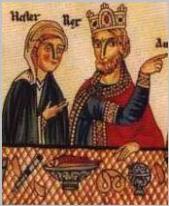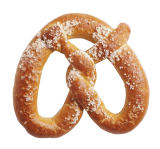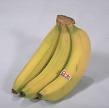
History

pretzel
Pretzels have been around for almost 1,400 years. History has their origin about A.D. 610 when a baker in a monastery in southern France or northern Italy twisted leftover strips of bread dough into the shape of a person’s arms crossed in prayer, traditional posture for prayer in those days.
Monks began offering the warm, doughy treats to children who had memorized their Bible verses and prayers. They were used to help children understand the Christian Trinity of Father, Son and Holy Ghost. The three empty holes in the pretzel represented the Christian Trinity. The monks called these treats pretiolas, Latin for little rewards.

Queen Esther, King Ahasuerus
The little knotted treat wandered around a while and became known in old high German as Brachiatellium, and then just plain Bretzel or Pretzel. Left: one of the oldest depictions of pretzels in the Hortus Deliciarum of 1190 showing Queen Esther and King Ahasuerus sharing a meal. The king is pointing at the ale cans and dart board not shown in the detail.
Continue reading Pretzel – Trinity symbol
Like this:
Like Loading...

































